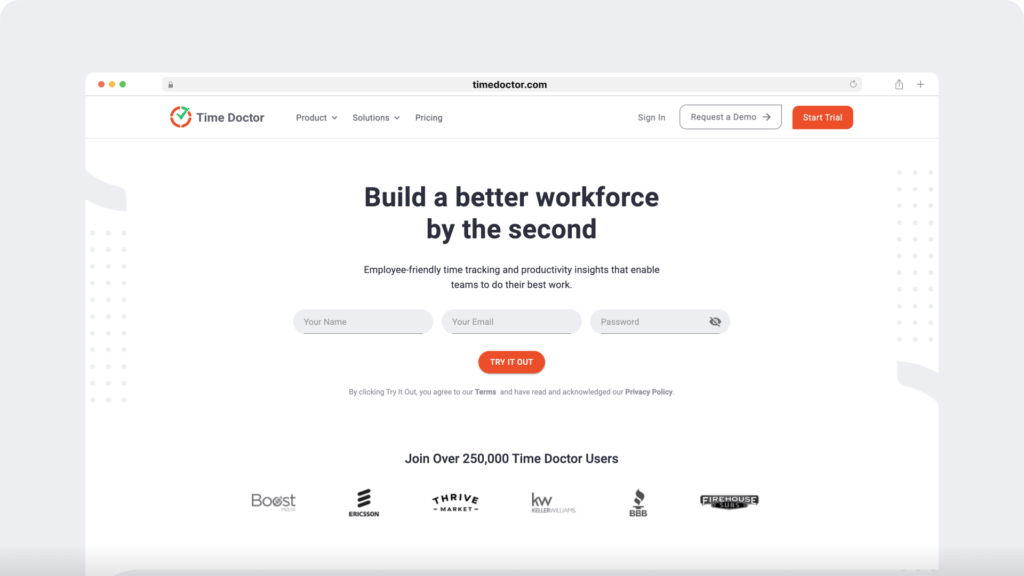Global employee engagement figures reached a record high in 2022, and this upward trend is expected to continue gradually over the next few years. According to Gallup, this result means that “more workers found their work meaningful and felt connected to their team, manager and employer.”
That only accounts, however, for 23% of the employees surveyed. Of more concern is the fact that nearly six in 10 employees are ‘quiet quitting‘ – which is what happens when an employee doesn’t leave their job but effectively stops trying and psychologically disengages.
What are the factors behind these concerning statistics?
The same survey suggests one huge factor: stress at work. Over 44% of interviewees said they experienced a lot of stress at work the day before they took the survey. It also suggests several other factors, including a lack of flexible working options, issues with the company culture, dissatisfaction with pay, and issues around personal well-being.
Armed with that knowledge, what can companies do to increase employee engagement? And how can managers keep their employees motivated and productive even when working remotely?
From effective communication to promoting a healthy work-life balance, we’ll examine the key approaches companies can take to improve employee engagement.
Table of Contents
- Reasons for low employee engagement
- Impact of poor employee engagement
- Tips for improving employee engagement
- Monitoring and measuring engagement
- Making a better workplace for everyone
Reasons for low employee engagement
Before we look at your company’s options to improve employee engagement, it’s helpful to examine the main reasons employers and employees report poor engagement. According to multiple recent studies, they are:
Lack of meaning and purpose
- Gallup’s 2022 State of the American Workplace report found that only 34% of employees are engaged in their work, with the most significant contributor being a lack of connection to the company’s mission and purpose.
- A study by McKinsey revealed that employees who understand their company’s purpose and the impact of their work are 58% more likely to be engaged.
Poor leadership
- A survey of 3,000 workers by GoodHire found that 82% said they would quit their jobs due to a bad boss. Significant reasons were cited as micromanagement, lack of communication, and inadequate support.
- Harvard Business Review identified toxic leadership behavior like negativity, bullying, and favoritism as key drivers of disengagement.
Limited growth and development opportunities
- According to Gartner, a lack of career opportunities is the main reason employees leave an organization.
- A Paychex survey of 600 employees found that 63% would be more likely to stay with their current employer if offered more training and development opportunities.
Insufficient recognition and reward
- A OnePoll survey found that 46% of workers have left a job because they felt unappreciated.
- In the same study, 65% said they would work harder if they felt their contributions would be recognized.
Unhealthy work environment and workload
- The American Psychological Association says that 57% of employees experience adverse effects, such as burnout, from workplace-related stress.
- Gallup’s 2022 State of the American Workplace report identified unfair treatment, lack of trust, and poor collaboration as significant contributors to disengagement.

Impact of poor employee engagement
Employee engagement can be defined by how much a worker enjoys their job and their satisfaction with their tasks and responsibilities. Despite engagement levels trending upwards, more than two-thirds of the global workforce feels disengaged from their jobs, as we have seen.
The negative impact of quiet quitting and disengagement, beyond employers effectively paying workers for not doing their jobs, is the degradation of the working culture. Nothing brings other workers down faster than seeing their colleagues skulk around, avoiding work and bad-mouthing the company. ‘One bad apple spoils the barrel’ is absolutely true when it comes to your business’s culture and working environment.
The fall-out from poor culture includes lower productivity, which directly impacts margins, low talent retention rates, which also affect productivity, and increased hiring costs as you continually try to fill a leaky, broken bucket.
Therefore, improving employee engagement levels is a top priority among many modern businesses. Identifying key engagement metrics, such as job satisfaction and productivity levels, has become paramount to ensure staff remain satisfied in their work. To do this, employers can implement several strategies, as outlined in the following section.
Tips for improving employee engagement
Although many companies, particularly BPOs, face issues regarding employee engagement, there are plenty of strategies you can use to improve engagement levels across the board. This section will highlight the core employee engagement strategies your business can implement to elevate the general workplace mood and re-engage your team members.
Focus on meaning and purpose
Ignite employee engagement by tapping into their sense of purpose. Clearly connect individual tasks to the larger company goals, highlighting how each contribution propels the organization forward. Celebrate successes, both big and small that showcase the combined impact of the team.
Empower employees to explore their passions by encouraging side projects aligned with their interests and talents. This fosters ownership and initiative, injecting personal meaning into their daily work. Finally, cultivate an environment of transparency through open communication. Regularly share company updates, decisions, and the reasoning behind them with employees. This builds trust, fosters a sense of belonging, and empowers them to feel genuinely involved in the journey.

Reduce workplace stress
Chronic stress and an overwhelming workload are enemies of employee engagement. Focus on fostering a supportive and inclusive culture. Champion fair treatment and respect, ensuring everyone feels safe and valued. Build trust through transparency, openly communicating decisions, challenges, and successes. Foster collaboration by encouraging cross-functional projects and social interactions, creating a sense of belonging and community within the organization. A strong team thrives on feeling like a team.
Analyze employee schedules and workloads, identifying areas of overload or imbalance. Adjust tasks and resources accordingly, setting clear expectations and prioritizing effectively. Don’t micromanage – empower employees with control over their work and decision-making. This fosters ownership, motivation, and, ultimately, engagement. Discourage the glorification of overwork and invest in employee well-being programs encompassing physical activity, stress management, and counseling services.
Provide opportunities for growth
Without sufficient growth and personal development opportunities, employees will become disengaged from their jobs and produce poorer-quality work. A recent study by Microsoft found that 55% of workers believe the best way to develop their skills is to find another job. This shows just how vital development opportunities are in the workplace.
Growth opportunities could involve mentorship and coaching initiatives, regular training in digital tools and software, and providing more autonomy to capable staff members. Frequent upskilling benefits both employees and employers, as companies will create more talented team members, and staff will become more engaged and productive in their work.
Communicate effectively
Effective communication strategies are vital in fostering an engaging and productive workplace environment, particularly in the era of remote work. Employers must offer frequent and attentive interaction with their team members, communicating things like company updates and goals clearly and transparently.
Encouraging employee feedback will help your staff engage with their jobs, giving them a platform to voice their concerns and suggestions. Employers should also invest in communication tools to promote effective collaboration among coworkers, facilitating tasks and ensuring employees get the support they need to stay engaged.
Offer due recognition for good work
More often than not, recognizing and acknowledging good work is simply a chance for employees to feel “seen.” When employers offer due and personalized recognition to their staff, engagement levels rise as employees feel their efforts are valued and appreciated.
HBR reports that even symbolic awards can increase engagement. Cards, certificates, public recognition, and positive reinforcement are all proven to have a profound effect on employee motivation, productivity, and engagement. Employers who offer due recognition to their employees are rewarded with reduced turnover rates and higher-quality outputs.
Provide perks and incentives
Offering perks and incentives is a top priority in modern businesses, as Mercer’s 2024 Global Talent Trends Report shows. According to the report, the second-highest priority among HR teams is to invest more in benefits to promote physical and mental health. Additionally, the sixth-highest priority is to invest in more financial perks related to retirement and well-being.
When employees are given a rewards system, however symbolic, they become more engaged in their work. Discounts, vouchers, gym perks, wellness programs, and paid time off all create a sense of purpose and drive among team members. Incentivizing your employees will not only increase the efficiency and quality of their work, but wellness rewards will also help improve the work-life balance and well-being of your staff. This all leads to enhanced engagement in the workplace.
Promote a healthy work-life balance
Following on from the last tip, employers must promote healthy work-life balance practices to ensure their team members remain engaged. Even in distributed teams, encouraging mindful practices, such as exercise, hobbies, and meditation, will help improve work-life balance.
Offering flexible work schedules will further enhance work-life balance among your employees. For instance, allowing your team members to work from home several days a week or providing them with the opportunity to choose their own working hours if fully remote can increase employee engagement, as team members feel more in control of their work-life balance. After all, 71% of remote workers say working from home helps them balance work and personal life.
Monitoring and measuring engagement
You must monitor and measure employee engagement through various methods to ensure your strategies are working effectively. For instance, utilizing employee feedback surveys will give you a clearer picture of how your team members feel and whether they need more support to become more engaged in their jobs. Employers can also invest in employee monitoring tools to give them further insight into their staff’s engagement levels.
Utilizing Time Doctor to improve employee engagement

Time Doctor is a workforce analytics tool that tracks remote team members’ work hours and habits. Since the software provides real-time data and analytics regarding the hours each employee worked and what they did during those hours, managers can accurately measure employee performance and engagement levels.
Time Doctor has helped many companies, such as Sarv, reduce burnout and stress among their employees by giving team leaders the insights they need to provide proper support to their remote teams. This, in turn, has led to improved employee engagement, as remote workers feel more supported and valued in their jobs.
Making a better workplace for everyone
Employee engagement is exceptionally important for your business. Engaged employees produce higher-quality work more efficiently and are far less likely to resign. Despite disengagement being a common issue, particularly with remote teams, you can improve staff engagement levels by providing growth opportunities, communicating effectively, offering due recognition and incentives, and promoting a healthy work-life balance.
Workforce analytics tools like Time Doctor help companies provide the right support to struggling employees, increasing engagement across the board. Take advantage of Time Doctor’s free trial and book a demo today.

Carlo Borja is the Content Marketing Manager of Time Doctor, a workforce analytics software for distributed teams. He is a remote work advocate, a father and a coffee junkie.


